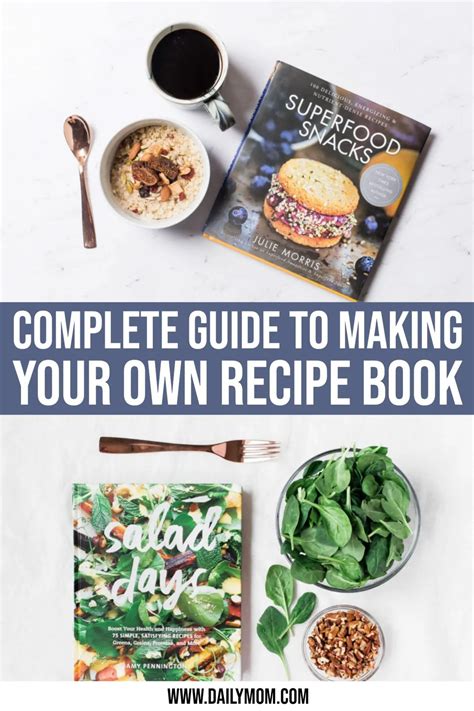How to Make a Recipe Book: A Comprehensive Guide
Creating your own recipe book is a rewarding project that allows you to preserve family favorites, showcase your culinary skills, or even launch a small business. This comprehensive guide will walk you through the process, from initial planning to final publication, ensuring your recipe book is not only delicious but also well-organized and visually appealing.
Phase 1: Planning Your Recipe Book
Before you even think about whipping up your favorite dish, careful planning is key to a successful recipe book. This phase lays the foundation for a cohesive and engaging final product.
1. Define Your Book's Focus and Target Audience:
- Niche Down: What kind of recipes will your book feature? Will it focus on baking, vegetarian cuisine, quick weeknight meals, or a specific regional cuisine? A narrower focus will make your book more appealing to a specific audience.
- Consider Your Audience: Who are you writing this book for? Beginners? Experienced cooks? People with dietary restrictions? Knowing your audience will help you tailor the recipes and instructions accordingly.
- Book Title & Subtitle: Brainstorm catchy titles that reflect the book's content and target audience. A strong subtitle clarifies the book's focus.
2. Recipe Selection & Testing:
- Choose Your Best Recipes: Select recipes you've personally tested and perfected. These should be dishes you're passionate about and confident in sharing.
- Recipe Testing (Crucial!): Thoroughly test every recipe before including it. This ensures accuracy and avoids potential disasters for your readers. Note down any modifications you make during testing.
- Recipe Quantity: Aim for a number of recipes that aligns with your book's focus and length. A smaller, focused book is better than a large, unwieldy one.
3. Structure & Organization:
- Categorization: Organize your recipes into logical categories (e.g., appetizers, main courses, desserts). Consider subcategories for further organization.
- Index: Create a comprehensive index for easy navigation. This is essential for a user-friendly recipe book.
- Table of Contents: Develop a clear table of contents that reflects your chosen categorization and section organization.
Phase 2: Recipe Development & Writing
With your planning complete, it's time to craft your recipes for maximum clarity and appeal.
1. Consistent Recipe Format:
- Standardized Format: Use a consistent format for all recipes, including:
- Yield: How many servings the recipe makes.
- Prep time: Time to prepare ingredients.
- Cook time: Time to cook the dish.
- Ingredients: List ingredients with precise measurements.
- Instructions: Clear, concise, step-by-step instructions.
- Tips & Notes: Include helpful tips, substitutions, and variations.
- Measurement Units: Stick to one system of measurement (metric or imperial) throughout the book.
2. Writing Style & Tone:
- Clarity and Conciseness: Use simple, straightforward language. Avoid culinary jargon unless your audience is familiar with it.
- Engaging Voice: Inject your personality into your writing. Make it fun and informative.
- Visual Appeal: Break up large blocks of text with headings, subheadings, bullet points, and white space.
Phase 3: Design & Production
Once your recipes are finalized, focus on the visual presentation of your recipe book.
1. Photography (Optional but Highly Recommended):
- High-Quality Images: Stunning food photography elevates the visual appeal of your recipe book. Consider hiring a professional food photographer if you lack the skills or equipment.
- Consistent Style: Ensure your photos have a consistent style and lighting.
2. Layout & Formatting:
- Software: Use design software (e.g., Adobe InDesign, Canva) to create a professional-looking layout.
- Font Selection: Choose fonts that are legible and visually appealing.
- White Space: Utilize white space effectively to avoid a cluttered look.
3. Printing or Digital Publication:
- Print-on-Demand: This allows you to print copies only when needed, reducing upfront costs.
- Self-Publishing Platforms: Utilize platforms like Amazon Kindle Direct Publishing for easy digital publication.
- Professional Printing: For a high-quality print book, consider working with a professional printing service.
Phase 4: Marketing & Promotion (Optional)
If you're aiming for wider readership, marketing your recipe book is crucial.
1. Social Media:
- Build Anticipation: Share sneak peeks of recipes and photos on social media platforms.
- Engage with Followers: Interact with your audience and build a community.
2. Website or Blog:
- Showcase your Book: Create a website or blog to promote your recipe book and connect with readers.
Creating a recipe book is a journey, but with careful planning, attention to detail, and a touch of creativity, you can produce a beautiful and delicious cookbook that you and your readers will cherish for years to come. Remember to focus on a specific niche to stand out and make sure the presentation of your book is as tasty as its content!
